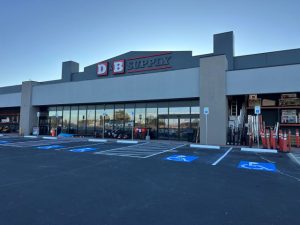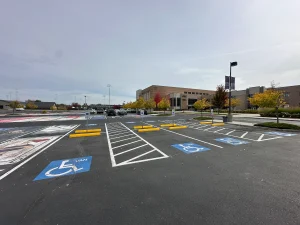How to Budget for Routine Asphalt Maintenance — and Why It’s Crucial for Your Property
When it comes to managing a commercial property or business, routine asphalt maintenance often falls low on the priority list—until problems like potholes, cracks, or drainage issues arise. But failing to budget for regular upkeep can lead to major expenses down the road. The truth is: preventative care is significantly more cost-effective than reactive repair.
In this post, we’ll explore why budgeting for asphalt maintenance is essential, how it saves money long-term, and how to create a practical plan for your business or property.
Why Routine Asphalt Maintenance Matters
Asphalt surfaces naturally degrade over time due to traffic loads, UV exposure, temperature fluctuations, and water intrusion. Without regular upkeep, this wear and tear accelerates, leading to extensive damage that can require full resurfacing or replacement—both of which are far more costly than routine care.
Key benefits of regular asphalt maintenance include:
- Extending the lifespan of your pavement (often doubling it)
- Maintaining a professional, welcoming appearance
- Preventing liability from trip hazards or vehicle damage
- Protecting your investment and avoiding surprise expenses
What to Include in Your Asphalt Maintenance Budget
To budget effectively, it helps to understand the key services that make up a comprehensive maintenance plan:
- Sealcoating – Recommended every 2–3 years, this protective layer shields asphalt from oxidation, water, and oil damage. It also restores the pavement’s deep black appearance.
- Crack Sealing – Small cracks should be sealed annually to prevent water intrusion and stop them from growing into larger structural issues.
- Patching – Fixing localized damage like potholes or failed areas before they spread helps avoid full-depth repairs.
- Striping and Marking – Refreshing parking lot lines, ADA spaces, and traffic markings improves safety and compliance.
- Drainage Checks – Routine inspections of your lot’s grading and water flow can prevent standing water and erosion.
Creating a Realistic Maintenance Budget
Here’s how to get started with your asphalt maintenance budget:
- Assess your current pavement condition: Work with a reputable asphalt contractor to inspect and document the state of your lot. They can help prioritize needs and recommend a maintenance schedule.
- Estimate annual costs: Routine maintenance typically costs $0.10–$0.30 per square foot per year—far less than the $2–$5 per square foot for major repairs or replacements.
- Plan short-term and long-term: Create a 3–5 year pavement maintenance plan that includes annual work (like crack sealing) and periodic services (like sealcoating and restriping).
- Set aside a maintenance reserve: Allocate a portion of your operating budget for ongoing asphalt care. Consider including this in CAM (common area maintenance) charges if applicable.
Why Proactive Budgeting Saves Money
Reactive maintenance is always more expensive than planned care. Small cracks turn into potholes, minor water drainage issues become sinkholes, and surface wear leads to costly resurfacing. By proactively budgeting for routine asphalt services, you avoid emergency repairs, reduce liability risks, and maintain your property’s value and curb appeal.
Final Thoughts
Your parking lot is often the first impression customers, tenants, and employees have of your business. By budgeting for regular asphalt maintenance, you not only protect that investment but also avoid the stress and high cost of unplanned repairs. Work with a trusted commercial paving contractor to build a custom maintenance schedule and financial plan that fits your property’s unique needs.


